Abstract
The effects of two methods of inoculum preparation (the opacity standard method and a template method) and three different types of media on the penicillin, tetracycline, spectinomycin, and erythromycin MICs for 191 non-penicillinase-producing, 49 penicillinase-producing, and 5 tetracycline-resistant isolates of Neisseria gonorrhoeae were evaluated. Three World Health Organization reference strains (III, V, and VII) were similarly evaluated. Inoculum preparation method did not significantly alter the MIC (i.e., within a twofold dilution) of either susceptible or chromosomally resistant non-penicillinase-producing isolates; MICs achieved by the template method were slightly higher, but these differences were not significant. However, with penicillinase-producing and tetracycline-resistant isolates, the template method, which delivered 10(4) CFU, produced unequivocal MICs (denoting clinical resistance) which were significantly higher than MICs observed with the opacity standard method (inoculum, 10(3) CFU). With penicillin-, spectinomycin-, and erythromycin-containing medium, addition of hemoglobin to the medium produced lower, though not significantly different, MICs with all isolates as compared with MICs on medium without hemoglobin. Media supplemented with hemoglobin produced higher tetracycline MICs with all isolates, which were significantly different (greater than twofold) from MICs on the same hemoglobin-free media. Changes in auxotype did not alter overall observations concerning the effects of different media and inocula on MICs.
Full text
PDF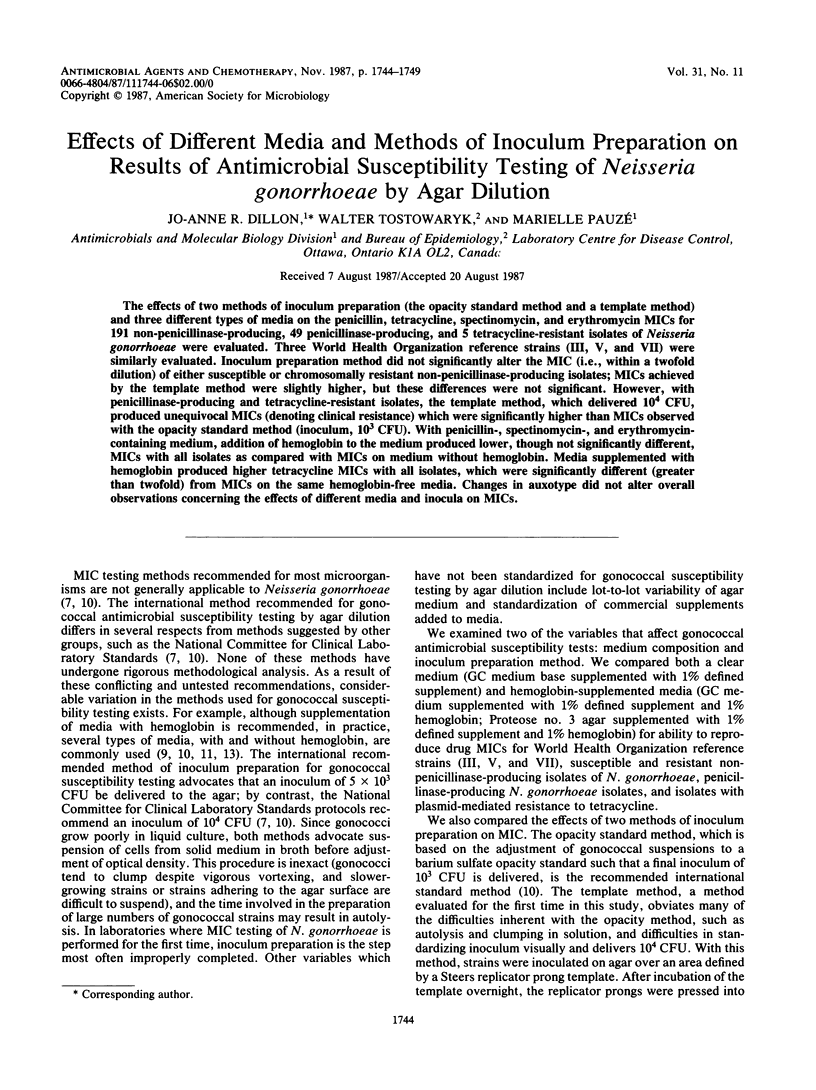

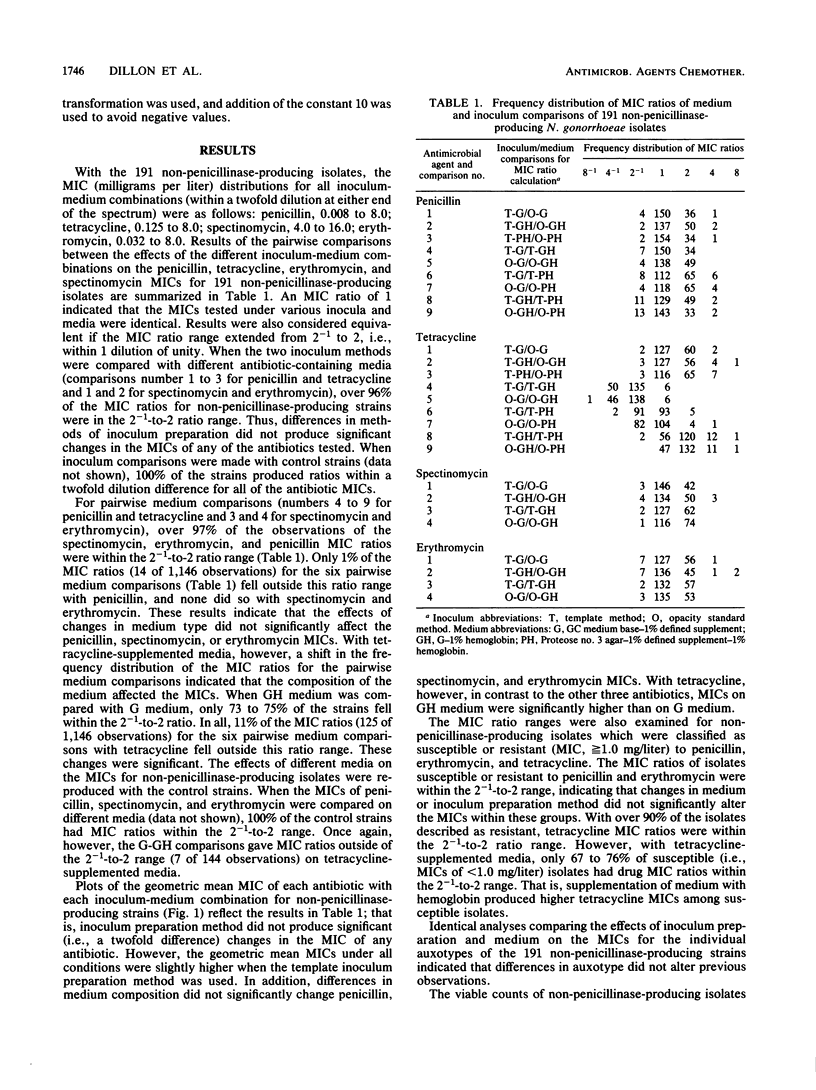
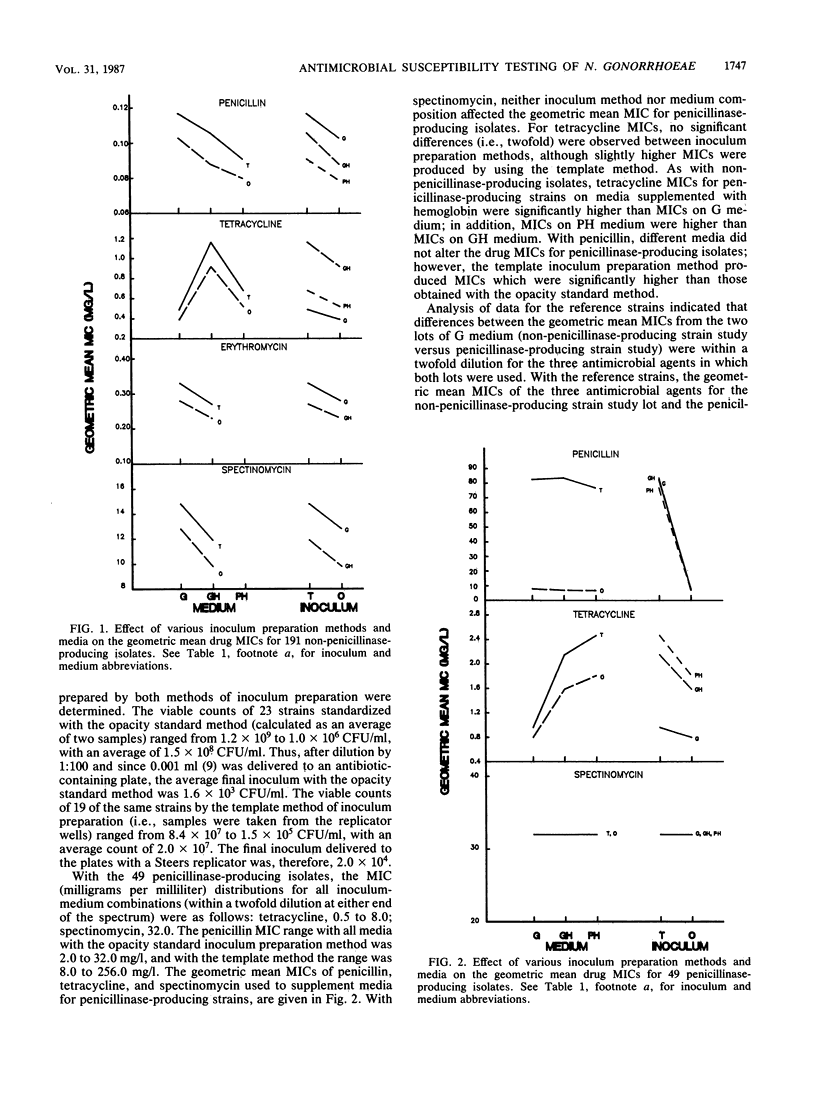
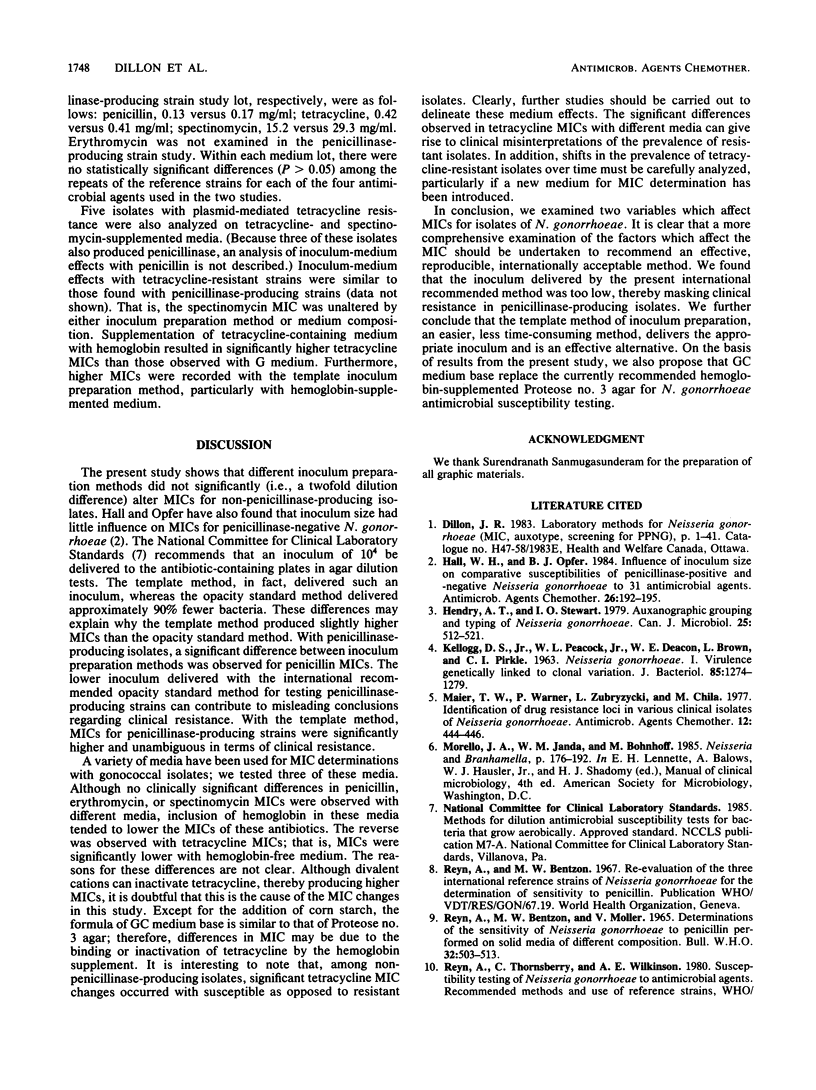
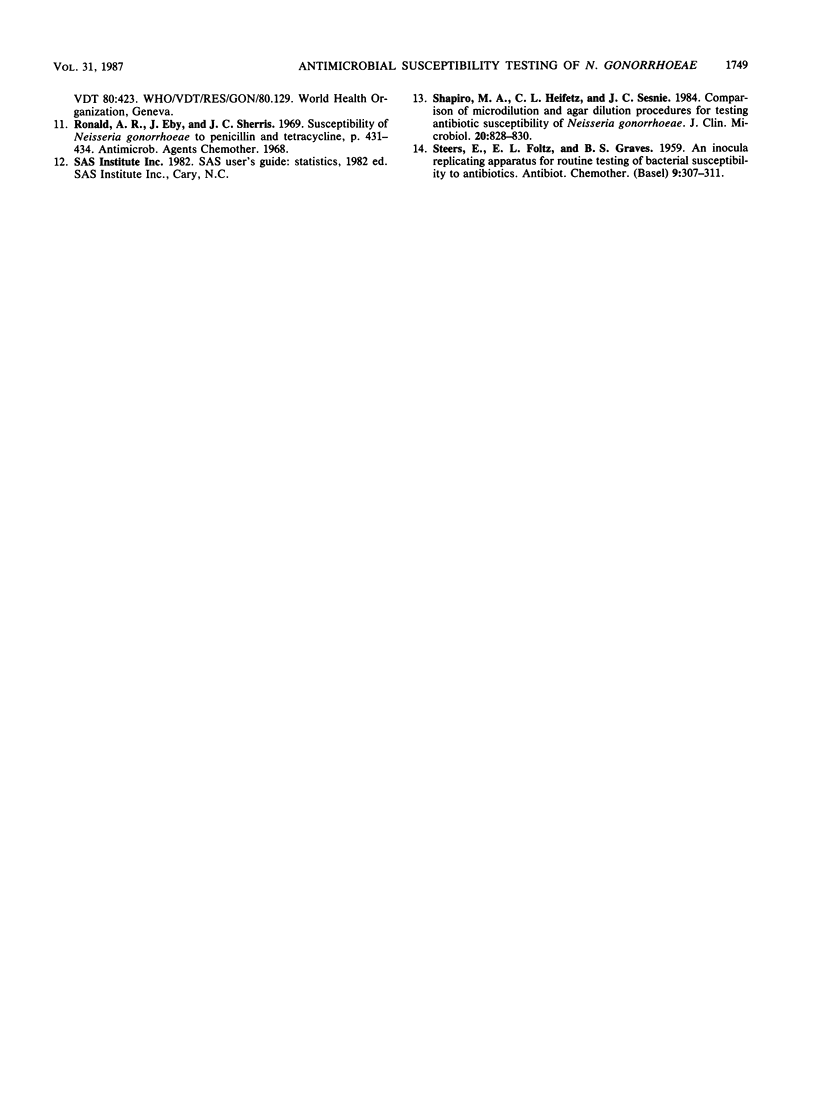
Selected References
These references are in PubMed. This may not be the complete list of references from this article.
- Hall W. H., Opfer B. J. Influence of inoculum size on comparative susceptibilities of penicillinase-positive and -negative Neisseria gonorrhoeae to 31 antimicrobial agents. Antimicrob Agents Chemother. 1984 Aug;26(2):192–195. doi: 10.1128/aac.26.2.192. [DOI] [PMC free article] [PubMed] [Google Scholar]
- Hendry A. T., Stewart I. O. Auxanographic grouping and typing of Neisseria gonorrhoeae. Can J Microbiol. 1979 Apr;25(4):512–521. doi: 10.1139/m79-075. [DOI] [PubMed] [Google Scholar]
- KELLOGG D. S., Jr, PEACOCK W. L., Jr, DEACON W. E., BROWN L., PIRKLE D. I. NEISSERIA GONORRHOEAE. I. VIRULENCE GENETICALLY LINKED TO CLONAL VARIATION. J Bacteriol. 1963 Jun;85:1274–1279. doi: 10.1128/jb.85.6.1274-1279.1963. [DOI] [PMC free article] [PubMed] [Google Scholar]
- REYN A., BENTZO M. W., MOLLER V. DETERMINATIONS OF THE SENSITIVITY OF NEISSERIA GONORRHOEAE TO PENICILLIN PERFORMED ON SOLID MEDIA OF DIFFERENT COMPOSITION. Bull World Health Organ. 1965;32:503–513. [PMC free article] [PubMed] [Google Scholar]
- Shapiro M. A., Heifetz C. L., Sesnie J. C. Comparison of microdilution and agar dilution procedures for testing antibiotic susceptibility of Neisseria gonorrhoeae. J Clin Microbiol. 1984 Oct;20(4):828–830. doi: 10.1128/jcm.20.4.828-830.1984. [DOI] [PMC free article] [PubMed] [Google Scholar]


